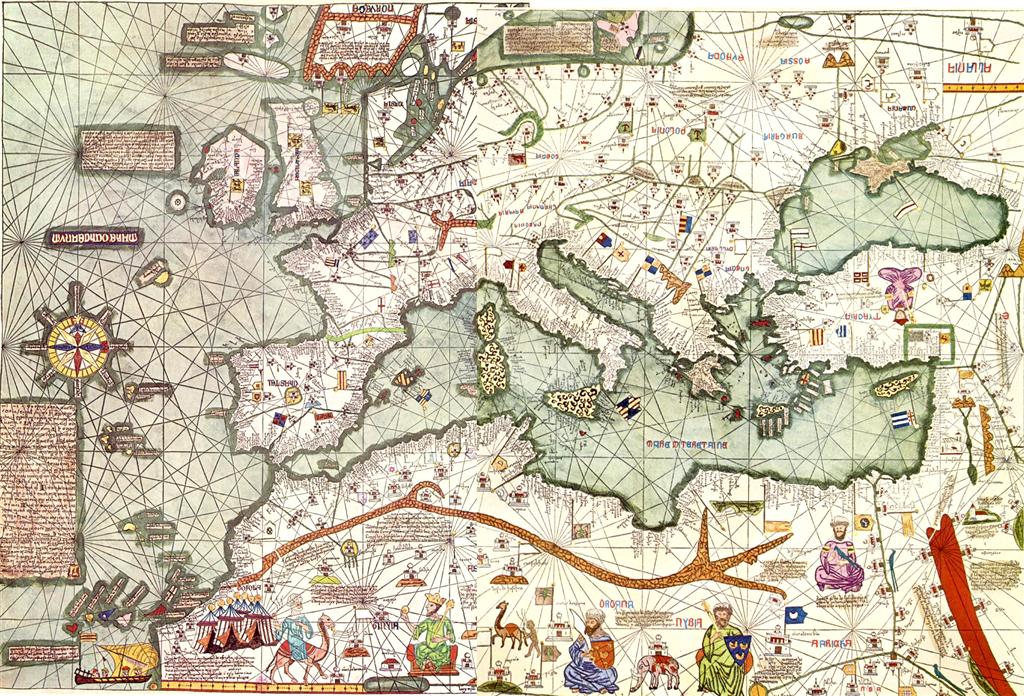
Famed Jewish cartographer Abraham Cresques has only one map we can trace back to his hand, but his renown is well deserved. “The Catalan Atlas”, created in 1387, depicts Medieval Europe and surrounding regions. The making of the map was commissioned by King Charles V of France, who requested that a set of Catalonian maps be constructed. Cresques was from Catalonia where cartography, compass making, and nautical technologies were all considered top-quality. For the late 14th Century Cresques’ atlas was considered a state-of-art piece of work given the detailing of ports, trade routes, seafaring routes, and resources. He also highlighted city-states and their allegiances symbolized by a flag. It also includes legends and text, giving the atlas a pretty familiar layout of many modern maps. Cresques was also credited with the first compass rose ever included on a map. Unlike nautical maps, the atlas is supposed to be read the North at the bottom, orienting from left to right Asia and the Atlantic Ocean. The atlas was split into six different 65 x 300 cm parchments, mapping also the Middle East and parts of Asia and Africa. Cresques’ work became popular for merchants and was highly valuable in trade. It would go on to be updated and replicated until the mid-1800s.
Pete
Notes:

Beautiful map! It’s amazing what cartographers were able to accomplish compiling coasts, landmarks, city states and trade areas. I wonder how long it took these cartographers to finalize these maps?